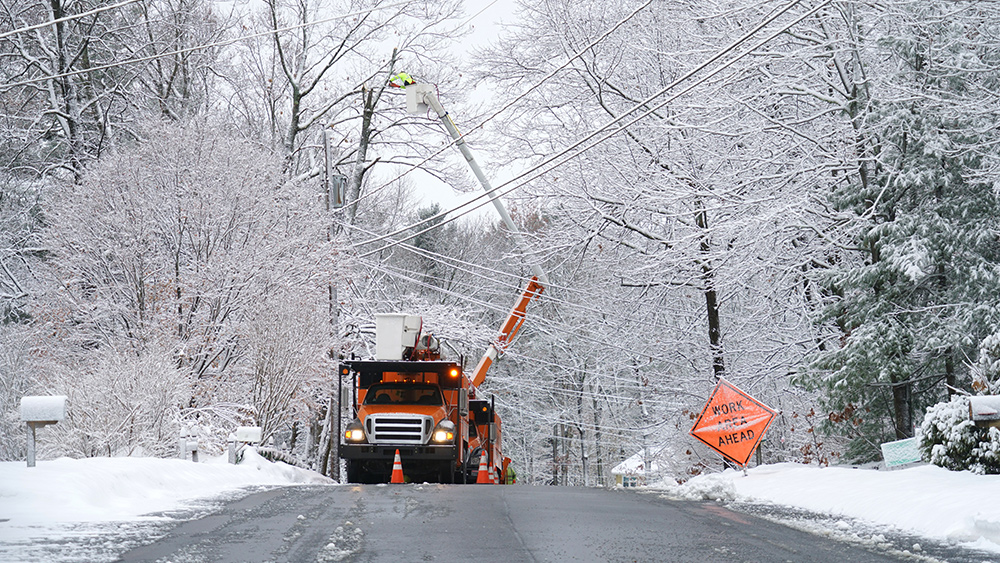Walgreens to close roughly 1,200 UNDERPERFORMING stores
02/17/2025 / By Ramon Tomey

- Walgreens plans to close approximately 1,200 under-performing stores nationwide by 2027, with five locations in California being shut down by the end of March.
- California’s high taxes, strict regulations, and rising costs are contributing factors to the closures, along with increased regulatory and reimbursement pressures.
- Walgreens is also closing stores in other states, including Illinois, Massachusetts, Georgia and Florida.
- The company’s reliance on front-end retail sales and smaller scale compared to competitors like CVS are adding to its financial pressures and difficulties in adapting to changing consumer behaviors.
- At least 93 employees in California could lose their jobs due to the closures, but Walgreens aims to redeploy the majority of affected workers to nearby locations.
Walgreens, one of the nation’s largest pharmacy chains, is pressing ahead with its plan to shutter hundreds of under-performing stores across the United States – with California emerging as a focal point of its struggles.
The company’s decision to close five locations in the Golden State, as reported by the Daily Mail, appear to be part of a broader strategy to close approximately 1,200 stores nationwide by 2027. According to the tabloid, the five locations – Whittier, Los Angeles, Orange, Placentia and Stanton – will shutter for good by the end of March.
The closures come as Walgreens grapples with declining profits, shifting consumer habits and an evolving retail landscape. Marty Maloney, the company’s director of media relations, acknowledged the difficulty of the decision.
“It is never an easy decision to close a store. We know that our stores are important to the communities that we serve, and therefore do everything possible to improve store performance,” he remarked. “When closures are necessary, like those here in California, we will work in partnership with community stakeholders to minimize customer disruptions.”
California’s business environment – often criticized for its high taxes, strict regulations and rising costs – has made it increasingly difficult for companies like Walgreens to operate profitably. Maloney cited “increased regulatory and reimbursement pressures” as key factors driving the closures, noting that these pressures have exacerbated costs related to rent, staffing and supply needs. The state’s policies, including higher minimum wages and stringent labor laws, have further strained businesses – particularly in the retail sector. (Related: Walgreens shutters 5 more San Francisco branches due to “ongoing organized retail crime.”)
Walgreens’ closures: A sign of wider retail struggles
The California closures are not isolated incidents. Walgreens is also shutting down stores in other states – including Illinois, Massachusetts, Georgia and Florida. In Chicago, five locations are set to close between Feb. 17 and 27, while a store in Tallahassee, Florida, will shutter on Feb. 25. Oakland and San Francisco will also see multiple closures, with a dozen locations in the City by the Bay alone slated to close by Feb. 27.
The nationwide closures reflect broader challenges facing the pharmacy retail industry. Traditional brick-and-mortar stores are struggling to adapt to changing consumer behaviors as more Americans turn to online shopping and prescription delivery services. Walgreens, in particular, has been hit hard by these shifts.
The company’s reliance on front-end retail sales such as snacks and household goods has become less profitable as customers seek lower prices and greater convenience elsewhere. Walgreens’ struggles are also compounded by its smaller scale compared to competitors like CVS, which operates over 9,000 stores nationwide.
CVS’s larger footprint gives it greater leverage to negotiate prices with insurers and healthcare providers, putting Walgreens at a disadvantage. Additionally, Walgreens has faced mounting financial pressures, with its stock price trading near 30-year lows and declining by 65 percent in 2023.
Despite these challenges, Walgreens CEO Tim Wentworth remains optimistic about the company’s future. “This turnaround will take time, but we are confident it will yield significant financial and consumer benefits over the long term,” he said in a recent statement.
The company’s $1 billion cost-cutting program, which includes the store closures, has already shown some progress – with shares rising 35 percent since the release of its first-quarter financial results in January. However, the closures have left many employees and communities in limbo.
In California alone, at least 93 workers could lose their jobs, though Walgreens has stated it intends to redeploy the majority of affected employees to nearby locations. The impacted roles include pharmacy technicians, pharmacists, cashiers, customer service associates, store managers and inventory specialists.
The Walgreens closures are part of a larger trend in the pharmacy retail sector. Rite Aid filed for bankruptcy in October 2023, closing 150 stores as part of its restructuring. While Rite Aid has since emerged from bankruptcy, its store count has been significantly reduced to around 2,000 locations nationwide.
As Walgreens continues its nationwide downsizing, the California closures serve as a stark reminder of the challenges businesses face in the Golden State. With its high costs and regulatory burdens, California has become a difficult environment for retailers, prompting many to rethink their presence there.
Watch this video explaining why the closure of thousands of Walgreens locations confirms economic collapse.
This video is from the ECONOMIC EDGE channel on Brighteon.com.
More related stories:
Walgreens to shut down underperforming stores and reduce investment in primary-care businesses.
Walgreens to close 150 stores by summer 2024 due to declining demand for COVID-19 products.
Sources include:
Submit a correction >>
Tagged Under:
Bubble, business, business closure, California, california collapse, closures, Collapse, Collapsifornia, debt bomb, debt collapse, drugstore, drugstore chain, economic collapse, economic riot, finance riot, market crash, money supply, risk, underpeforming store, Walgreens
This article may contain statements that reflect the opinion of the author
RECENT NEWS & ARTICLES
COPYRIGHT © 2017 COLLAPSE.NEWS
All content posted on this site is protected under Free Speech. Collapse.news is not responsible for content written by contributing authors. The information on this site is provided for educational and entertainment purposes only. It is not intended as a substitute for professional advice of any kind. Collapse.news assumes no responsibility for the use or misuse of this material. All trademarks, registered trademarks and service marks mentioned on this site are the property of their respective owners.




















